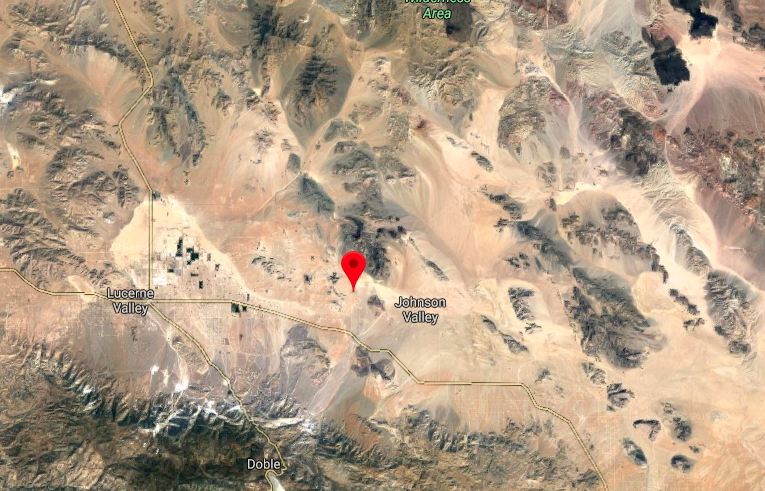The Swimming Pool Hiding in the Middle of the Desert

Pictured above is — or was — a swimming pool, five feet wide, five feet deep, and eleven feet long. Around it is a lot of sand — lots of sand — and maybe a lizard or hare. There are no roads nearby, no showers or bathrooms, and … and, well, nothing else, really. The pool above was located in California’s Mojave Desert, more than two hours outside of Los Angeles and for all practical purposes, in the middle of nowhere. Here’s a satellite view (or take a look for yourself, here).

And if you could find it, you could swim in it.
The pool was created in the summer of 2014 by artist Alfredo Barsuglia. He saw it as commentary — a statement about the conflict between swimming pools, a common fixture in Californian homes, and lack of access to water, a common problem in drought-stricken California at the time. More likely, though, the pool became a very cool curiosity which adventurers had no shame in using.
Social Pool, as Barsuglia dubbed it, was open to anyone — if you knew how to find it and how to get in. When announced, that wasn’t very hard to figure out, as Barsuglia told the public exactly how to get there, kind of. To swim in the pool, one had to visit the MAK Center for Art and Architecture in West Hollywood and ask for the key and the pool’s GPS coordinates. Assuming the key had been returned, that request would be granted, provided that the hopeful swimmers agreed to a few rules: no copying the key, no sharing the GPS coordinates, and you had to return the key within 24 hours. You were also asked to bring a gallon of water with you to the pool, to replenish any lost to evaporation. (You didn’t have to clean the pool beyond skimming stuff off the surface; Barsuglia installed a solar-powered filter.) Beyond that, though, the pool was yours to use as you saw fit — with the hope that you’d do so in a way which preserved the pool for future use by others.
At first, that’s exactly how things went down. In late June of 2014, reporters from LAist became the second group to find the pool, going through the MAK Center as instructed by Barsuglia. Their report, available here, is extensive, and they did a good job of making sure that they followed the rules — they even scrubbed any metadata from their photos to make sure the GPS coordinates didn’t leak through.
As more and more visitors came to the site, though, more and more information about its location made its way online. And with that, pool seekers increasingly tried to find the pool without going through the MAK Center. In one comical example, a reporter from the Huffington Post went to the pool with a few friends through proper channels to find the hidden swim spot and succeeded. But they weren’t alone. Late that evening, two guys showed up, which given the remoteness of the location, was hardly a coincidence. The two newcomers had pieced together the location of the pool from information found online (and made a key using the photos posted on LAist as a model). Upon seeing the surprised group already at the pool, they simply left and came back the next day, as to not cause trouble. But the party legitimately at the location didn’t know that; instead of staying overnight at the pool location, they made their way back to LA.
The exhibit closed in September of 2014 — officially, at least. That’s when the MAK Center stopped giving out the key and coordinates, and when Barsuglia stopped maintaining the pool (to the extent that he was anyway). But at that point, no further action was taken — the pool was left as-is. And by then, as noted above, adventure-seekers were able to find and open the pool without any official permission. The pool, in effect, never closed.
But today? You can’t really swim there anymore. In the spring of 2016, LAist reported that someone had stolen the pump and solar panel from the installation, rendering it nothing more than a fancy bucket of water in the middle of nowhere.
Bonus fact: In most places, swimming pools are either heated or left unheated — because there’s no need or because it’s too expensive to heat them. Not in Dubai, though. In 2008, the Guardian reported that the Palazzo Versace would offer a chilled swimming pool (and, for good measure, a beach with artificially chilled sand). The reason? Outside temperatures regularly approach 50 degrees Celcius (122 degrees Fahrenheit) and pools, similarly, get too warm to use. The solution: the hotel installed a “chiller” to keep the pool cool and refreshing.
From the Archives: Why Our Fingers Wrinkle When Wet: You’ve had it happen. Here’s the science (we think).
